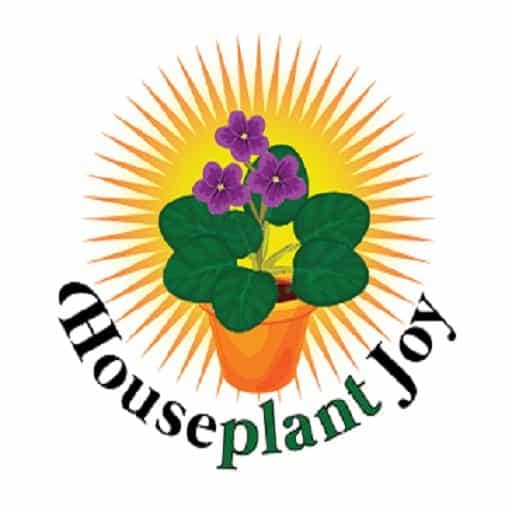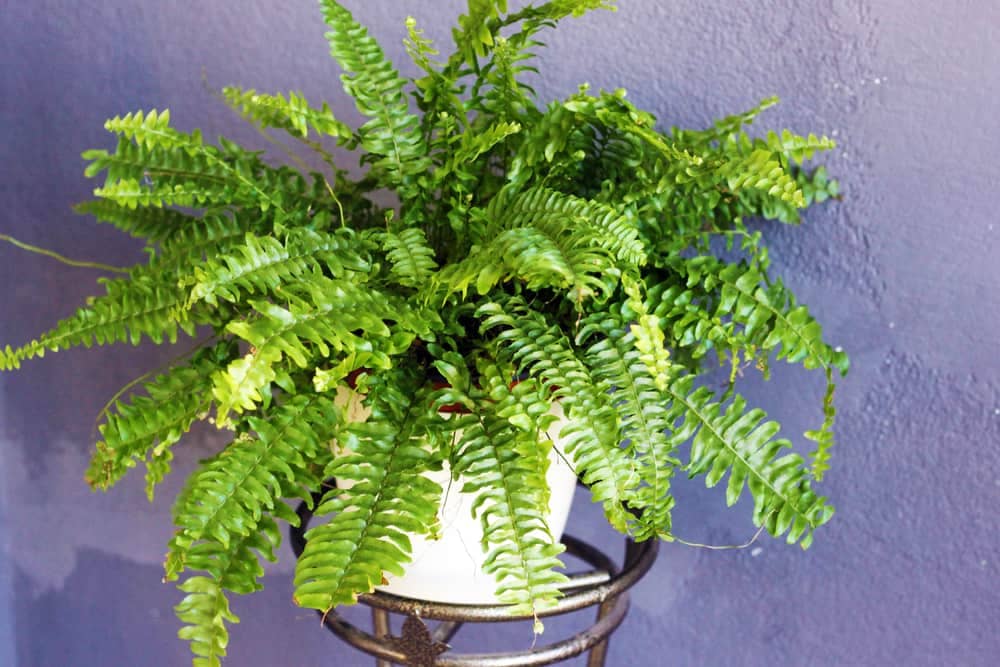HousePlantJoy is supported by our audience. When you purchase through one of our links, we may earn a small affiliate commission. As an Amazon Associate I earn from qualifying purchases. Your cost is not affected.
==================
Ferns As Houseplants, A Beautiful Display
Boston Fern
As with any plant, knowing its native environment and needs helps to provide the best growth and longevity. Ferns often grow in very shady, damp areas. They depend on the shade from other plants and trees to block direct sunlight. However, ferns do need some sun to produce their nutrients. Unlike some fungi and moss, they cannot grow in total darkness.
They typically inhabit wet or marshy areas, although some live in trees. Our homes often don’t meet the humidity levels these frond-bearers boasts. However, with a little innovation and care, even a dry environment may host fern plants.
Gardeners, both indoor and out, cherish these plants with their interesting foliage and lush, green growth pattern. With such a wide variety of ferns to choose from, you might wonder which one best suits your home.
To help you answer that, we offer a few of our favorite varieties. Our selections offer great decorative value in an easy-to-care-for houseplant. Which one will you choose? Or perhaps you add several to your home.
Types of Fern Houseplants
There is a lot of variety of fern houseplants. Keep reading, and there may be a fern houseplant right for you!
Bird’s Nest Fern (Asplenium genus)
Birds Nest Fern
With their lack of feathery foliage, bird’s nest ferns look less like a fern than others. However, these true ferns showcase themselves in quite an interesting fashion. Named for how their new fronds grow, Bird’s Nest Fern’s babies emerge from the center of the plant and grow outwards This creates the image of a bird’s nest.
The many varieties of the Bird’s Nest Ferns all do well in indirect light. Unlike most other ferns, they generally tolerate dry soil. However, it would be best if you never let it dry out completely. Also, they don’t require high humidity levels. This makes them a splendid choice for any fern admirer who cannot provide the humid air most ferns require.
Button fern (Pellaea rotundifolia)
The Button Fern provides another option for fern lovers to keep in homes with less humidity. These ferns prefer dryer conditions. Overwatering or keeping in too high a humidity zone will cause the fronds to turn brown and eventually die.
With the need for lower moisture and humidity, button ferns are considered one of the easiest types to grow. While other ferns need daily misting, your button fern will happily adorn your home with less care and fussing.
Provide well-drained soil and bright indirect light, and allow the soil to dry slightly before watering; your fern will provide years of decor. Further, remember that the button fern does not appreciate extremely low temperatures. Keep them cozy in your home with you!
For many homes, these might be considered the ideal ferns as houseplants.
Boston Fern (Nephrolepis exaltata)
When most of us think of a fern as a houseplant, the Boston Fern might come to mind first. And rightfully so.
The Boston Fern provides a gorgeous display as a tabletop or hanging plant. Start with a small plant and provide proper care, and you will soon have incredible beauty.
This fern flourishes in higher humidity and plenty of indirect light. Perhaps you have a bathroom or kitchen window that provides a perfect host place for your fern.
But if not, you still may keep these elegant ferns. Just provide extra humidity by misting it well each day. You might also keep it on a humidity tray or near a humidifier.
Keep the soil evenly wet but not waterlogged. The Boston Fern likes moisture, but the roots may rot if kept too wet.
PET_LOVERS NOTE: While many pet owners don’t keep ferns as houseplants due to the possibility of their pets getting poisoned, the Boston Fern is considered pet-friendly, not toxic.
Blue Star Fern (Phlebodium aureum)
Blue Star Fern
While similar to the more popular Kangaroo Paw Fern, Microsorum diversiform, the Blue Star Fern sports decorative blueish-green paw-shaped fronds. And unlike most ferns which naturally grow in soil, the Blue Star Fern grows in trees as an epiphyte. This means that while they grow in the tree, they are not parasitic. The Blue Star Fern does no harm to its host.
To closely mimic the natural habitat, provide a moist environment with medium indirect lighting. Your fern will need well-drained loose soil such as orchid bark to feel comfortable at your home. Given these parameters, your Blue Star Fern will provide years of happy co-existence.
Holly Fern (Cyrtomium falcatum)
Like the real holly plant, the Holly Fern displays shiny decorative fronds. While they thrive in a humid environment with moist soil, these ferns offer a bit more resilience than some other varieties. In fact, they survive some drier periods, though they cannot thrive that way for long.
To keep the humidity level up, you should mist daily and consider using a humidity tray or stones. Some people find that placing multiple plants together helps retain the humidity.
The Holly Fern tolerates a little more sun and lower temperatures than many other ferns. Thus, they are known to be easier to keep than some other varieties.
Braken Fern (Pteridium genus)
Braken Fern fronds look similar to the Blue Star Fern, with thin stalks and broad leaves. However, one difference stands out, the color. While Blue Star Ferns show blueish coloring, Brake Ferns found in garden stores often feature beautiful variegation in the form of dark green coloration on the outside of the leaves with a creamy light green color on the inner parts.
Like most ferns, Brake Ferns require a high humidity level and moist soil. However, they tolerate a little drying out for a short time. Thus, you should consider a humidity tray and daily misting to maintain them at their best. Additionally, they prefer bright, indirect lighting to keep them happy.
However, they don’t grow well in lower temperatures. If you choose to put them outside during the summer months, make sure you bring them in before the temperatures drop.
Note: Some call this the Brake Fern.
Maidenhair Fern (Adiantum genus)
For those looking for more of a challenge, the beautiful Maidenhair Fern steps up.
Like most ferns, they prefer medium indirect lighting, but the Maidenhair has no tolerance for direct sun. However, the main challenge remains in keeping them moist enough. Without needed moisture and humidity, they quickly drop fronds and fall ill.
To meet the challenge, consider keeping your fern in a humid bathroom or near a humidifier. Provide moisture-retaining soil but don’t allow it to become soggy.
With proper care, this plant might well become your favorite among the fern group. Their lacy fronds, when properly cared for, decorate in style.
So Many Choices of Ferns as Houseplants
And indeed, once you host one type of fern, you will no doubt want to add more. Many fern keepers grow a variety of ferns indoors. Some also keep a few outdoor varieties if they have garden space.
We’d like to hear about your experience keeping ferns in your home. Please leave a comment below. Photos welcome, too!











